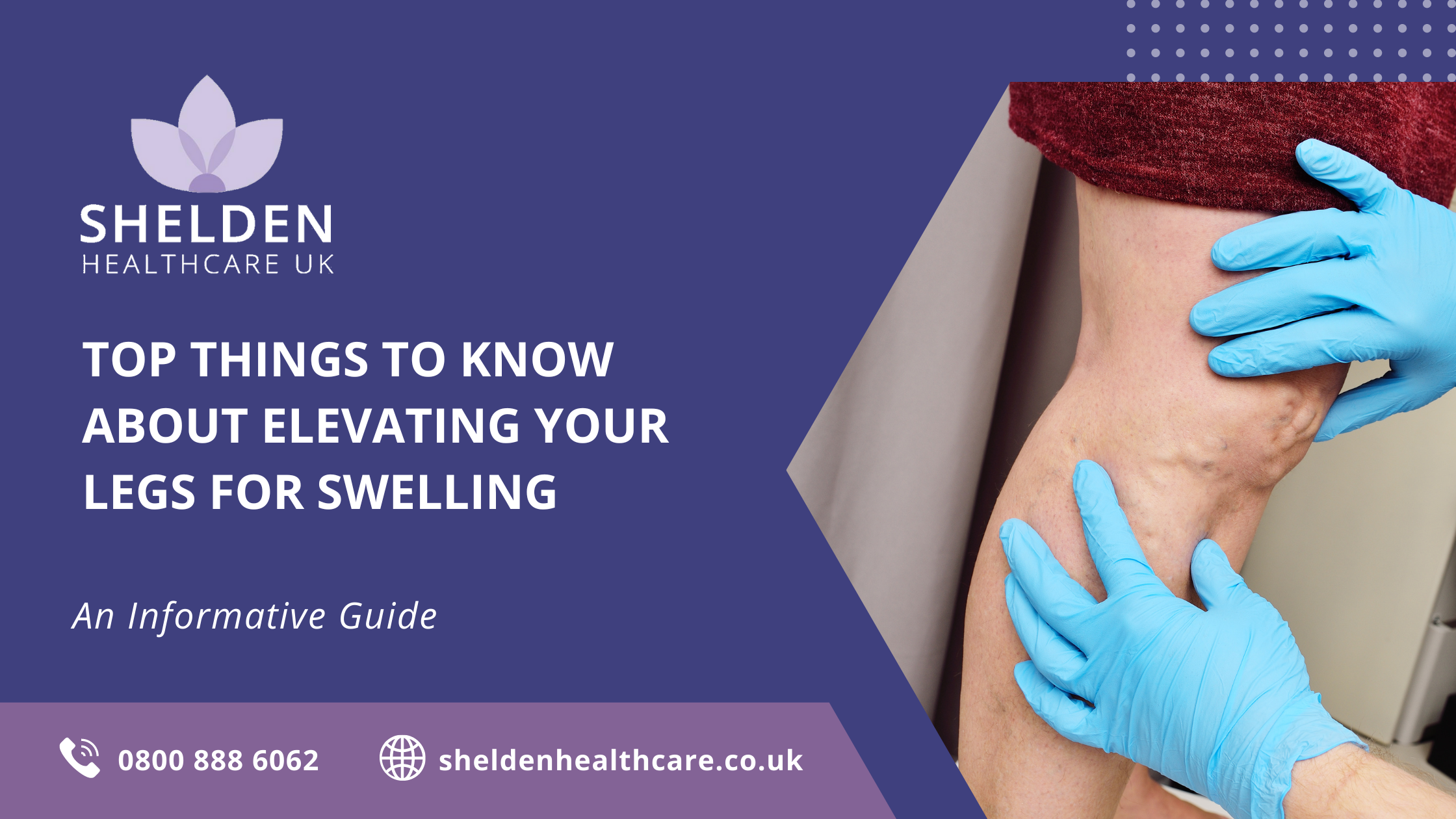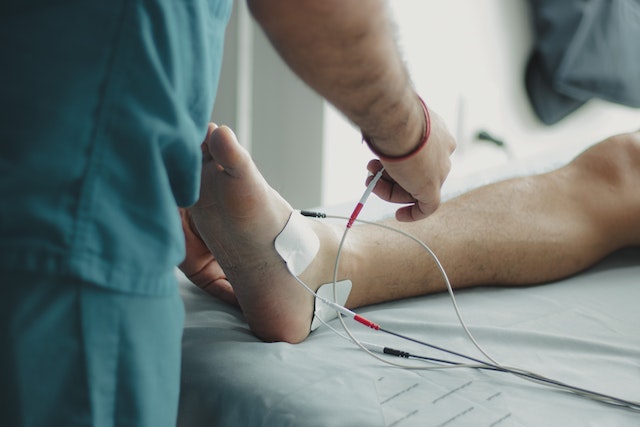Top Things to Know About Elevating Your Legs for Swelling

If you often experience swelling in your legs and feet, elevating them can help reduce this symptom.
But one of the biggest questions is: how long should you keep legs elevated to get optimal results? There's no one-size-fits-all answer because it will depend on each individual’s unique needs.
Fortunately, we have some guidelines and helpful tips that are applicable for most people looking to lower leg inflammation. With the right information at hand, it doesn't have to be complicated or time consuming process. Read on to learn more.
How Long to Elevate Legs to Reduce Swelling
One of the most commonly-recommended times for elevating legs is 15 minutes. This should be enough time to help reduce swelling and aid in blood flow. You can repeat this several times throughout the day or whenever you need it.
If you want to increase the amount of time spent elevating your legs, some people suggest up to 30 minutes. However, it may take some trial and error to figure out the best amount of time for your specific needs.
Tips for Elevating Your Legs


Whether you are recovering from an injury, experiencing a bout of swollen legs, or have been diagnosed with chronic venous insufficiency, elevating your legs is a proven way to reduce the pain and pressure associated with them. It is also an effective way to improve blood flow.
Elevating your legs isn't for everyone, but it can be a worthwhile exercise. It may even help you sleep better. It's also an inexpensive way to help you manage several medical conditions. There are many mistakes to avoid when elevating your legs, from wearing tight clothes that cut into your skin to using the wrong kind of pillow.
Fortunately, there are a few simple ways to make the process easier and more comfortable. One of the most effective ways to elevate your legs is by using a footstool. It's also a good idea to use a cushion to provide some cushioning. The leg stool is a bit more expensive than a pillow, but it's well worth it.
It's important to talk with your doctor about any leg elevation routine you plan on doing, and make sure to follow their directions. This will help ensure that no harm is done to your legs in the process.
No matter what kind of health concerns you have, it's important to remember that elevating your legs should always be done safely and while elevating your legs is an effective way to reduce swollen legs, it shouldn’t replace other treatments and preventative measures such as compression socks or regular exercise to work your leg muscles and calf muscles.
Common Causes of Leg Swelling
Varicose Veins
Keeping your feet elevated to reduce swelling due to varicose veins is an effective way to relieve leg pain and discomfort. This simple and easy to implement treatment may reduce swelling and discomfort, and also increase blood circulation.
The venous system is a complex system of veins that work together to carry blood from the heart to the rest of the body. When the valves in the veins are damaged, the blood can pool in the vein, causing swelling and pain. These valves can be damaged by age, heredity, obesity, and other factors.
When these valves fail, the blood will pool, leading to varicose veins. The walls of the veins can also be damaged, causing the veins to stretch and weaken. As the walls weaken, the valves will not function correctly, causing the blood to flow backward.
Varicose veins are also associated with a sedentary lifestyle. This can cause blood to pool and cause swelling in the legs. A sedentary lifestyle can also increase the risk of blood clots and other complications but leg elevation can help prevent these effects.
Superficial Thrombophlebitis
Thrombophlebitis is a condition that can affect the veins beneath the skin. There are two types of thrombophlebitis: superficial thrombophlebitis and deep vein thrombosis (DVT). If you have superficial thrombophlebitis, you may be referred to a hospital or a clinic for further testing and treatment.
The symptoms of superficial thrombophlebitis are typically mild and go away on their own within a few weeks. In rare cases, a blood clot can form in the vein, which is called deep vein thrombosis. Deep vein thrombosis is more serious and can be life-threatening. If you have superficial thrombophlebitis, your healthcare provider may suggest anticoagulants (blood thinners) to stop the clot from forming. You can try raising your affected leg as this may help reduce swelling.
Cellulitis
Cellulitis may develop in any part of the body, but most commonly occurs in the lower extremities. You can tell if you have cellulitis by looking for tenderness and swelling. You may also notice red, warm skin.
In addition to taking antibiotics to treat it, you should elevate your legs for as long as possible. This will reduce the swelling, ease the leg pain, and speed up your healing process. Cellulitis is a serious condition, and you should get it treated quickly. The infection can cause body aches and chills. It can also spread to other areas of the body.
Frequently Asked Questions


What is the best way to elevate my legs?
The most comfortable and effective way of performing leg elevation is by lying down with your legs propped up against a wall or on pillows. Make sure that your knees are slightly bent for additional comfort and support for your lower back. If possible, try alternating between standing with your feet elevated and lying down from time to time.
Is there anything else I should do while elevating my legs?
Yes! While elevating your legs, you could also gently massage the area that is swollen or use a cold compress for further relief and extra health benefits. Additionally, be sure to stay hydrated by drinking plenty of water and staying away from any salt-laden drinks or foods as they can cause additional swelling.
How can I tell if my leg elevation is working?
You should start to notice a decrease in the amount of swelling after a few days of regularly elevating your legs. It is important to continue the practice for several days or even weeks until you are satisfied with the results. If your swelling persists, it is best to consult a doctor before trying anything else.
Are there any risks associated with elevating my legs?
Elevating your legs should not be done for too long as it may cause blood to pool in the veins in your feet and legs. Additionally, if you experience any sharp pains or discomfort while elevating your legs, be sure to stop immediately and seek medical help.
Final Thoughts
Elevating your legs is a simple step that can help you manage leg swelling and provide health benefits. By understanding how long to elevate your legs, you can work to maintain a healthy and active lifestyle. With the right amount of time and effort, you can keep inflammation at bay and enjoy life with greater mobility
If you have any additional questions about elevating your legs or managing other leg issues, be sure to speak with your doctor for further advice. With their help, you can get the relief you need and keep your legs healthy.








